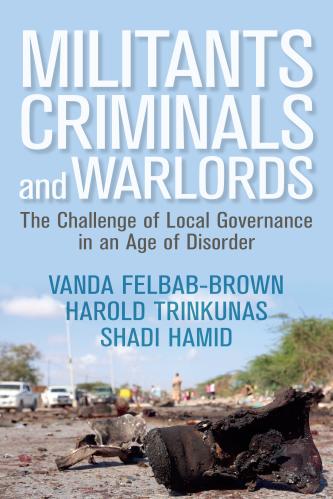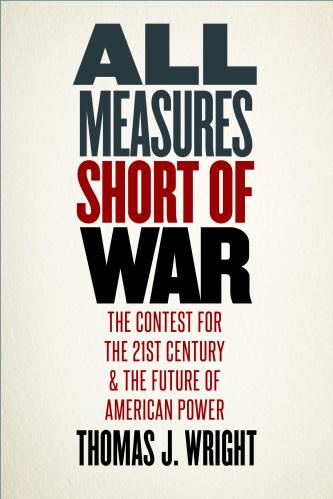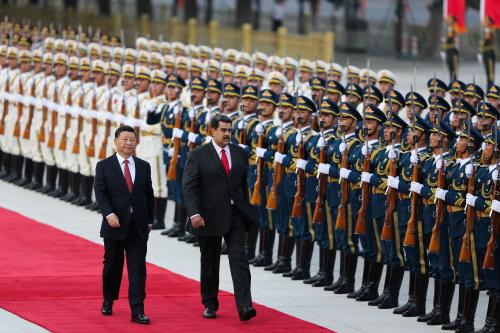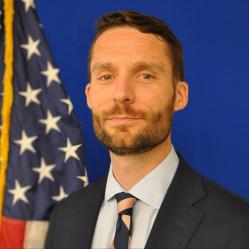The Biden administration’s initial foreign policy priorities are coming into focus: combating climate change, competing with China, and reversing the spread of authoritarianism, all through the prism of U.S. domestic renewal.
As the White House puts pen to paper on its first National Security Strategy (NSS), these themes will feature prominently. But so too will other less prominent but still critical issues. Top among them should be state fragility and associated threats to U.S. interests. As Secretary of State Antony Blinken said during his confirmation hearing: “The risks that continue to be posed from fragile states” are “very much” on President Joe Biden’s mind. The United States must therefore “do what we can” to help strengthen fragile states and prevent them from becoming “failed states.”
Indeed, fragility is intertwined with the administration’s core priorities. Fragile states are less equipped to quell the spread of pandemics like COVID-19, more likely to be the source of violent conflict because of predatory governance, less able to curb climate change or deal with its effects, and in some cases more susceptible to meddling from Beijing or Moscow.
Here is why and how the forthcoming NSS should address state fragility.
Fragility as a framework to address national security priorities
Fragility is the absence or breakdown of a social contract between citizens and their government. It develops when the relationship between a state and society fails to produce policy outcomes that citizens view as effective and legitimate, and is enabled where predatory elites exploit governance institutions to gain from corruption or conflict.
This corrosion of a country’s social contract can manifest in various forms of armed violence, including governments suppressing dissent and nonstate armed actors seeking to overrun a ruling regime or advance a coterie of criminal interests. The breakdown also shows in vastly suboptimal policy responses due to a lack of resources or technocratic prowess, or a combination of both, to a range of issues that impact neighboring countries.
These and other symptoms of state fragility exacerbate or complicate many of the Biden team’s foreign policy challenges. Fragile states are more vulnerable to stresses of climate change, less able to take proactive steps to address it, and in some cases key emitters. Such countries are more exposed to Beijing’s attempts to expand its influence, whether through opaque investment deals or efforts that aim to promote the Chinese Communist Party’s authoritarian model as superior to democracy, including training of political party representatives. Armed violence disrupts supply chains and pushes migration flows to U.S. allies. Fragility is an enabler of terrorism that continues to threaten U.S. interests abroad and citizens at home, even if there has not been a foreign attack on U.S. soil since September 11, 2001.
Incorporating state fragility into the national security strategy
The United States need not — and indeed should not — address state fragility everywhere. But it must tackle it and its consequences in countries that matter most for U.S. interests. To do otherwise would constitute whistling past the graveyard, ignoring a key challenge simply because it does not rank among the administration’s already stated pressing items.
In crafting the NSS, the Biden team can do three things to appropriately incorporate and address threats from and opportunities in fragile states.
First, the national security strategy should include implementing and fully funding the new “U.S. Strategy to Prevent Conflict and Promote Stability,” as called for in the 2019 Global Fragility Act. Envisioned as a “PEPFAR for conflict” and coming with up to $1.1 billion over 10 years, the strategy is a ready-made framework to address aspects of the fragility challenge in a way that has bipartisan support and is based in evidence.
The administration could make small changes to the strategy (including adding climate change as a cause and consequence of fragility, for instance) but need not make heavy edits. The strategy’s treatment of conflict as a political problem requiring strong democracy and governance as a solution, as well as the importance of peacebuilding, are spot on. To get implementation right, the White House must integrate its work on democracy and multilateral diplomacy into strategy execution.
Second, the national security strategy should commit to preventing conflict in priority countries as well as investing in the infrastructure and human capital necessary to do so. Conflict overseas matters to U.S. citizens because it can disrupt supply chains, hinder access to valuable markets, enable terrorism, and facilitate the spread of diseases like the coronavirus. Better to avoid these disruptions where possible than deal with the fallout. Upstream efforts also make financial sense: Each dollar spent on violence prevention can save $16 later in dealing with the aftermath of armed conflict.
The U.S. government agencies critical to this endeavor, including the United States Agency for International Development’s (USAID) new Bureau for Conflict Prevention and Stabilization and the Department of State’s Bureau of Conflict and Stabilization Operations have the expertise to get results. Along with other important State Department functional bureaus, like Counter Terrorism, they should be given the top cover and resources to prevent and mitigate violence in those countries of greatest importance to U.S. security and economic prosperity. This functional area expertise is necessary but not sufficient to prevent and mitigate violence. Department and agency regional bureaus, which develop country-specific policy, must be invested and in the lead.
Recognizing the inherently political nature of conflict, the Biden administration should elevate the role of diplomacy in conflict prevention. State Department officers are integral to understanding their counterparts’ interests and identifying off-ramps for them that can avoid outbreaks of armed conflict. To augment its preventive diplomacy capabilities, the U.S government must give diplomats the training and professional incentives necessary to get results in conflict zones. The Department of State should add a class on conflict prevention and fragility to their A-100 course for all new foreign service officers. Officers should be required to serve in fragile states, or at least rewarded with career advancement for doing so. The department should also consider extending some tours for longer than two years so that diplomats have time to build and leverage political relationships and transform these bonds into prevention results.
Finally, the national security strategy should explicitly highlight that functioning democracy and good governance are among the best antidotes to violence and elevate them as a key solution. This would align with the administration’s focus on strengthening democracy and human rights abroad, and add a specific way bolstering good governance overseas benefits Americans at home. As part of this, the White House should reassess the impact and, in some cases, unintended consequences of U.S. security sector assistance. Annually, the United States allocates roughly $20 billion in support to partner government security forces. In many of these cases, however, security gains come at the expense of security forces serving as protection for elites who control governance to secure patronage rather than serve citizens. This underwrites fragility and thereby undermines U.S. interests in the long-term. The Biden team has the opportunity to think through how better to deploy this assistance to get sustainable results, avoid counterproductive consequences, and even redirect some of the funding.
Looking forward
The Biden team faces a multiplicity of foreign policy challenges. It has rightly decided to prioritize climate, China, and standing up for democracy and human rights. But it cannot ignore other pressing threats, and state fragility is chief among them.
The Brookings Institution is committed to quality, independence, and impact.
We are supported by a diverse array of funders. In line with our values and policies, each Brookings publication represents the sole views of its author(s).









Commentary
Why and how the National Security Strategy should address fragile states
March 2, 2021